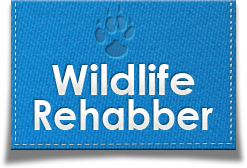Duck Management for Communities
Many beautiful planned communities, apartments, condos and single family homes are built on land near natural or man-made lakes. The serene setting of a lake with waterfowl may have initially enticed residents who didn’t thoroughly evaluate what they might encounter when living so close to wildlife. This is compounded by the quick population growth of waterfowl that live in a safe environment and are extremely well fed.
Sometimes the complaints of a single resident who is offended by duck droppings requires addressing, or the problems of duck overpopulation necessitate change. The solution to both situations is the same. The goal is to adopt new policies and manage communal property such as common grounds around waterbodies to bring about realistic solutions.
Let residents know that your community association or property managers are in a situation that forces some hard decisions with regard to duck population management. This position will let complaintants know that you are making a concerted effort to address the situation and forces sympathetic residents (who would otherwise ignore new policies) to realize the severity of the situation. Their combined cooperation is necessary for the success of a humane long term plan. When initializing this process, it is important to remember that it is impossible to please everyone.
Identify The Problem Areas
Man-hours and costs necessary to implement any plan are also two important aspects to consider. It is recommended that the primary elements of a plan be established, then residents should be invited to participate in finalizing the plan. Their participation in the initial planning stage will ensure greater cooperation and compliance. They can be recruited to carry out nest monitoring for humane population management programs, raise funds for decorative grass plantings or even construct a sign for the newly designated duck feeding site. Resident notification can occur through a community newsletter, neighborhood flyers, signs at entry roads, or individual mailings.
1. Begin the process by using a property survey to aide in planning. When addressing existing problems, identify complaintants and problem areas on the survey.
Where The Ducks Are
Specifically identify where the largest group of ducks congregate, which residents feed the ducks from their residences, where most on-site feedings occur, etc. This will identify if there is a daily travel pattern that the ducks prefer.
Example:
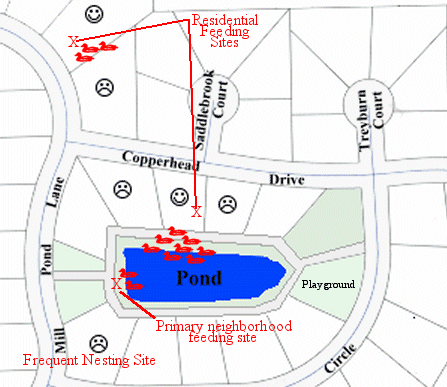
See the images at the bottom of this page for diagrams on how the problems identified in this survey were addressed.
2. Once the problem locations are identified, use the survey to look for solutions. It is critical to consider natural behaviors of waterfowl when laying out plans and identifying solutions. The table below may help address solutions based on duck behavior.
| Problem | Natural Behavior | Solution |
| “Tresspassing” | Ducks prefer to congregate on areas with very little vegetation on water’s edge. | Block their direct path. Use grasses at waters edge to restrict land access. A 1-foot strip of short cattails or other attractive aquatic vegetation can be planted along edges adjacent to residential properties or be left unmowed. |
| Damage to grass and plantings | Heaviest waterfowl traffic (bare grass areas and duck droppings) will occur at feeding areas. | Establish a designated feeding area. |
| Nesting Sites | Ducks prefer to nest away from water in or under tall grass and vegetation | Provide alternative nesting areas such as pampas grass or other tall decorative grasses on the perimeter of communal property. It is important that the locations should be a fair distance from the water and in areas with the least amount of activity by humans. |
| Overpopulation | Muscovies breed whenever the temperature is warm, up to 4 times per year (12-18 eggs per nest). | Humane population management program. See below |
Establish Policies
3.In addition to changes which address the natural behavior of the ducks, policies should be instituted that address actions by residents which contribute to the problems.
| Various residents feeding ducks throughout community | This encourages ducks to wander throughout neighborhoods looking for handouts. Quite often, complaintants reside next to residents that feed ducks from their property. Ducks usually cross the complaintants property and even remain there awaiting feedings. | Restrict backyard feedings. Let residents know that there is a designated feeding area. You will greatly increase their participation by pre-selecting 2 or 3 sites and inviting these residents to help make the final site selection.Make note of these residents, because they can be your prime recruits for assisting in a humane population management program. See below |
| Domestic releases | Property managers and community associations would be astounded if they knew how many of their residents purchased and released ducklings into communal water bodies each year. Wildlife rehabilitators are innundated with calls from residents who “live near a pond/lake” and call requesting rearing advice after purchasing ducklings for future release into the waterbody. | Communities should adopt stringent policies which restrict such activity. Beginning in February and continuning through June, residents should be reminded of this policy. This can be accomplished through the community newsletter or with signs near the feeding areas. Domestic ducks are considered livestock or farm animals. Most city ordinances restrict the possession of livestock within its jurisdication. |
4.Once you have established a tentative plan, use this checklist to ensure you have addressed some of the key elements necessary to make effective long-term changes.
Does the plan address changes necessary to…
- Disrupt the daily travel path of the ducks
- Discourage neighborhood roaming in search of handouts
- Create policy change restricting backyard feedings
- Designate a communal feeding site
- Create policy change restricting duck rearing and release
- Recruit residents in establishing a humane population management program
- Offer alternative nesting sites on communal property
Ducks are just like people when it comes to changing their behavior. Do not expect immediate results. They will gradually modify their behavior as they come to realize their favorite neighborhood feeding sites are gone. As new plantings or unmowed areas develop, they will begin avoiding those areas. Population numbers will gradually level out with nest monitoring.
Humane Duck Population Management
The goal of this plan is to humanely reduce the number of offspring produced by resident ducks. Consideration of a duck’s natural nesting instinct is critical, otherwise such a plan will be unsuccessful. The best way to initiate a program is to recruit the assistance of the most sympathetic residents and invite a local wildlife rehabilitator to help instruct those residents on successfully administering a humane population management program.
Participating residents can be designated as primary contacts when maintenance staff or other residents locate nesting sites. This will eleviate the burden on office or staff personnel.
Simply destroying all nests or eggs will only result in the duck renesting in different locations until she has a successful hatch. This is the key consideration when managing active nests. The duck must be allowed to incubate and hatch at least 2 ducklings, otherwise she will abandon the nest and immediately start a new nest elsewhere. Allowing her 2 viable eggs will ensure that this duck will spend 3 weeks incubating and up to 12 weeks caring for her 2 ducklings.
The goal is to alter all but two of the eggs in a nest so that they are unable to hatch. This can only be accomplished during the laying period (before incubation). If there is any doubt regarding the development of the eggs, a sampling should be taken to a local wildlife rehabilitator for candling.
During the laying period (before incubation), the eggs are still dormat and should be vigorously shaken to cause the internal structure to change (comparable to scrambling the egg inside the shell). Each shaken egg should be dated with a crayon the day it is shaken and returned to the nest. Removing the altered eggs could result in the duck abandoning the nest and starting a new one elsewhere if she feels a predator has discovered the site. The eggs can also be coated with vegetable oil. Do not shake two of the eggs. These eggs should be labeled by crayon as “Viable”. Keep the unshaken eggs on top of or away from any oiled eggs. The shaken eggs can be safely pierced and discarded one week after the female leaves the nest with her new ducklings, or 45 days after incubation began. NEVER shake an incubated egg; it has begun development and rather than rendering the egg infertile it could result in a deformed duckling.
Note: This information refers to domestic ducks only! It is a violation of federal law to disturb the eggs, nests, or raise ducklings of all wild ducks without first obtaining the necessary permits.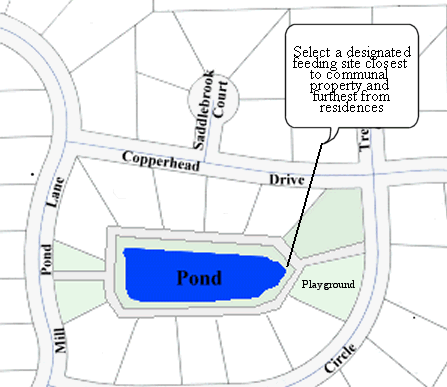
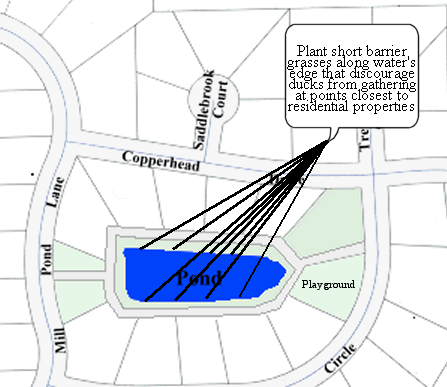
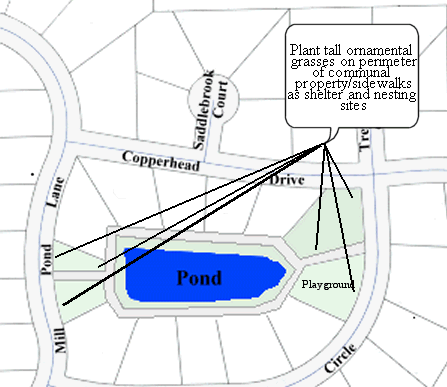
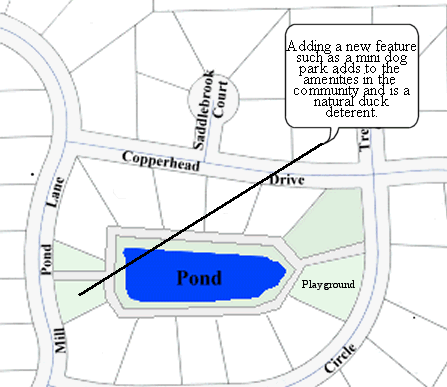
For more information regarding other wildlife dilemmas, solutions and products, Click Here
To add a link to this page from your website, copy and paste the following code onto your page:
Category: Nuisance Info
Waterfowl Info
Wildlife Information
